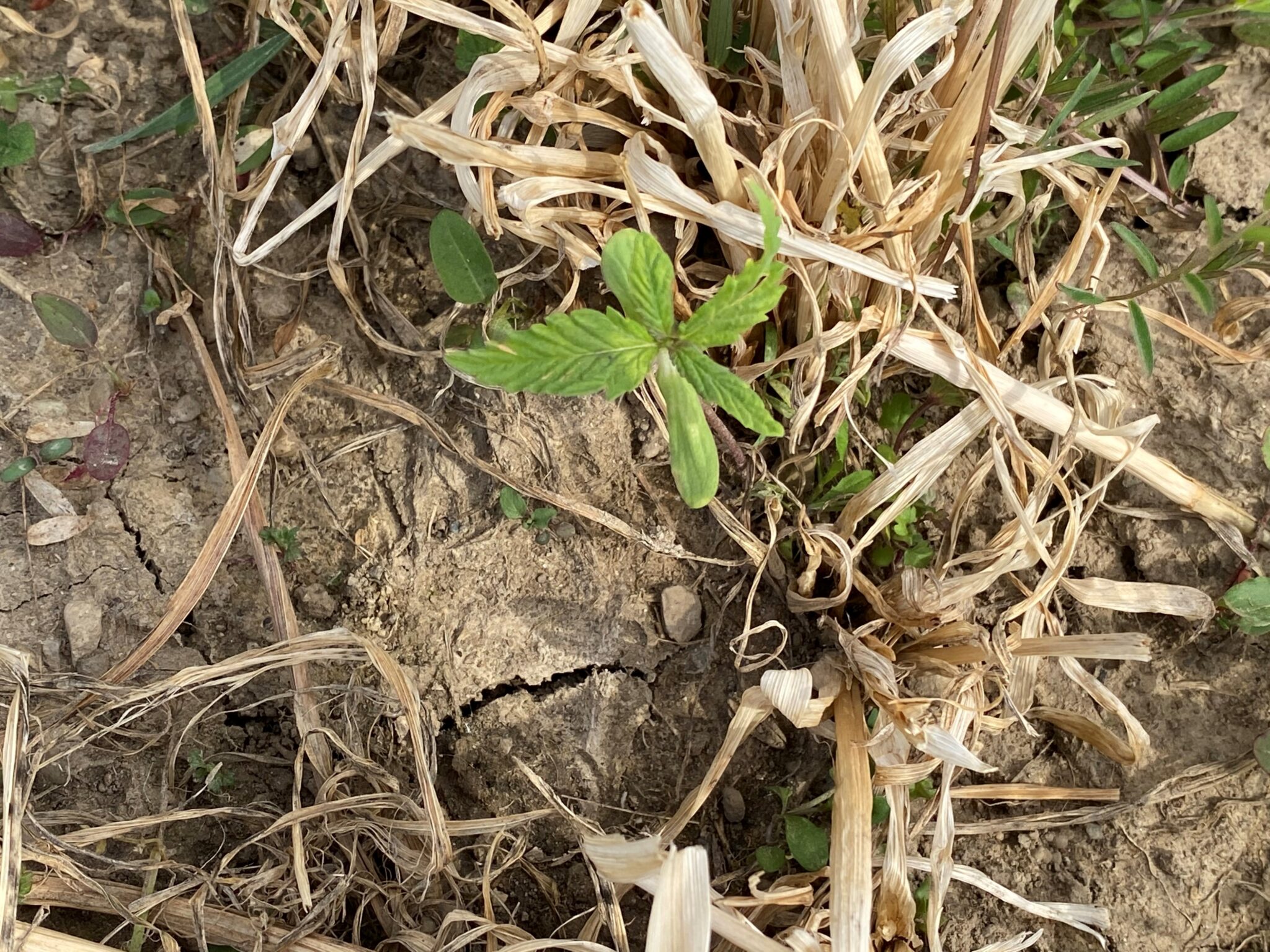It’s that time of year again! Volunteer hemp is up in fields where the seed was dropped the previous season. This is typically seen in grain and fiber hemp, where there are a lot of male and female plants. However, volunteers can be found in a cannabinoid system (all female) if female plants were unintentionally pollinated by a rogue male, feral hemp, or a neighbor with male plants. Hemp growers are going to want to check their fields where hemp was previously planted.
When a grower applies for a license, field sites are registered using GPS coordinates. Even if a grower is going to plant hemp this year, if the field is not registered, the volunteers need to be removed to avoid any potential regulatory consequences.
Some growers opt to plant hemp on the same site for multiple years, so they may not mind seeing volunteers. Volunteers can present a couple of problems though.
- Volunteer plants may violate a seed purchasing agreement (if one was signed). Some agreements would consider volunteers a violation if the grower plans to just continue to let them grow to maturity.
- Volunteer plants may be a cultivar that the grower found to be a poor performer or was not THC compliant (THC > 0.3% on a dry weight basis). These are plants that may have been destroyed last year, but seed had already matured and dropped to the ground.
- Volunteer plants may harbor early-season pests or diseases. For example, Cannabis aphid (Phorodon cannabis), which is usually found later in the season, has been found on volunteers in April.
Fortunately, small hemp plants are easily destroyed using tillage or other forms of mechanical weed control. Volunteer hemp at Meigs farm are still small, so growers in northern Indiana may want to wait another week to go look for volunteers.



